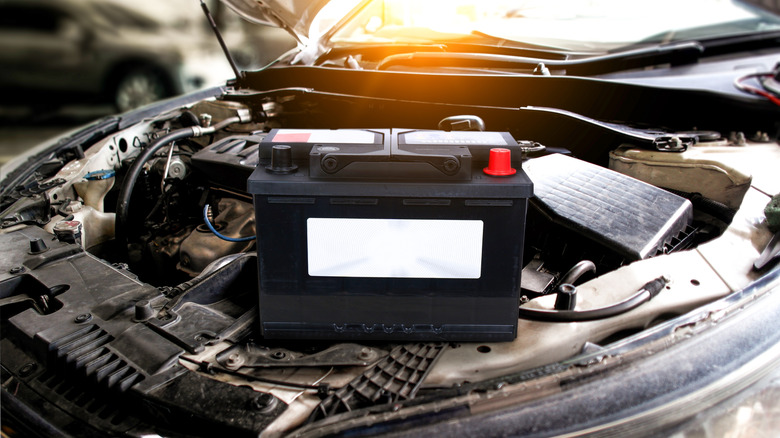Are Car Batteries Waterproof? What To Do If Yours Gets Wet
While things like fuel, oil, and transmission fluid all play a vital role in keeping the engine of any car, truck, or SUV running properly, a case could be made that the battery is the beating heart of the vehicle. The battery does, after all, power the vehicle's starter motor, which is primarily responsible for cranking the engine and thus initiating the combustion process. On top of that, it also runs the vehicle's entire electrical system, powering various other necessary components.
As such, properly maintaining your vehicle's battery can be every bit as important as it is with other components under the hood of your vehicle. That includes doing what you can to keep things as free of moisture as possible around the battery and its terminals, as an abundance of wetness can eventually lead to electrical shorts and power-killing corrosion.
Modern car batteries from the major brands tend to make such maintenance fairly easy, as they're often sealed and designed to limit water damage. Most even require water to function properly. That means that they should be unaffected if you're driving in the rain or running your vehicle through a car wash. The battery is also protected from above by the hood of the vehicle, though it should still be okay if you need to get under that hood when it's raining. Water resistance aside, car batteries are not completely waterproof. Thus, prolonged exposure to heavy rain can still be problematic, and submergence in water can indeed be deadly.
What to do with a wet car battery
If you're worried about heavy rain damage, you should dry the battery and its terminals with a clean, dry towel as soon as possible after exposure. In the latter case, it should go without saying that if the components under your hood are submerged in water, you'll likely have bigger problems than a dead battery. While some of those components might be salvageable, prolonged submergence will likely signal the end for your vehicle's power source, as it's almost impossible to fully dry out the interior of a car battery once it's become saturated with water.
The chances of saving the battery are smaller if it's been exposed to highly corrosive saltwater, and if your vehicle is powered by lithium-ion tech, the odds of saving it are further reduced. However, even as there's no set timeframe for survival, a sealed battery may still be salvageable if it was submerged for only a short period.
If you think you are in that window of opportunity, it's vital that you disconnect and dry the battery as fast as possible, using a clean, dry towel and paying particular attention to the terminal connectors. After that, let the battery air dry for as long as you can. Using a fan will likely also help. It's worth noting that, even if the power source is salvaged, you may still need to properly jump the battery for it to work. Whatever the case, you'll probably still want to purchase a new battery sooner rather than later, as its lifespan and functionality were almost certainly reduced by the exposure.

